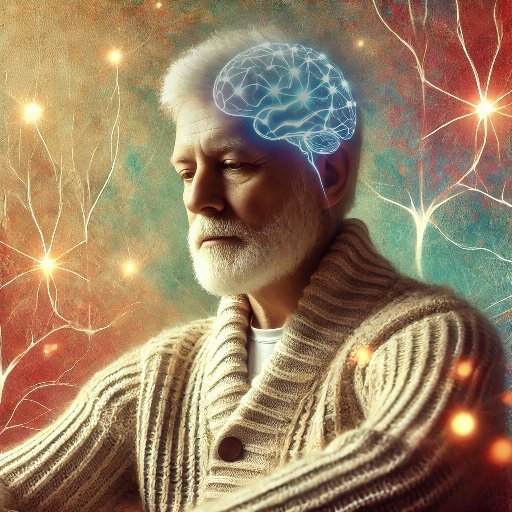Cognitive Restructuring: How to Reframe Anxious Thoughts and Overcome Negative Thinking

Cognitive restructuring helps you identify and challenge negative thinking patterns that fuel anxiety and depression.
Contents
- What Is Cognitive Restructuring?
- Why Do Our Thoughts Matter So Much?
- Steps to Reframe Anxious Thoughts
- Real-World Example
- Does Cognitive Restructuring Really Work?
- Tips for Practicing Balanced Thinking
- Digital Tools and AI Therapy for Cognitive Restructuring
- Moving Forward
- FAQ: Cognitive Restructuring
What Is Cognitive Restructuring?
Feeling stuck in a loop of anxious, negative thoughts? Cognitive restructuring is a core technique from cognitive-behavioral therapy (CBT) that can help you break that cycle. It teaches you to notice and challenge unhelpful thinking patterns and replace them with balanced, realistic thoughts — in other words, how to reframe anxious thoughts so they no longer run the show.

Cognitive restructuring transforms negative thinking loops into balanced, realistic perspectives.
Therapists use cognitive restructuring techniques every day, and you can practice these CBT exercises for anxiety on your own to manage mild-to-moderate anxiety or depression.
Cognitive restructuring trains you to interpret stressful situations in a healthier way. It isn't "think positive" fluff or pretending bad things don't happen. Instead, you aim for an accurate and fair view of events. Suppose you catch yourself thinking, "I always mess everything up." A restructuring approach asks: Is it really always? Where's the evidence? You soon realize you're exaggerating and ignoring times you succeeded. The harsh thought becomes, "Sometimes I make mistakes, but I also do plenty of things well." That small shift can calm the emotional fallout.
CBT helps people become aware of automatic negative thoughts, question those thoughts, and change self-defeating patterns — the heart of cognitive behavioral therapy self help.
Why Do Our Thoughts Matter So Much?
Thoughts, feelings, and behaviors are tightly linked. If a friend doesn't text back, you might think, "They're mad at me," which triggers anxiety and withdrawal. In reality, the friend may just be busy. Such cognitive distortions (thinking traps) that create anxiety thought patterns include:
- Catastrophizing – expecting the worst possible outcome
- Black-and-white thinking – all-or-nothing judgments
- Mind reading – assuming you know what others think
- Fortune telling – predicting negative future events
- Mental filtering – focusing only on negative details
These habits fuel negative thinking loops and can intensify anxiety and depression, but you can change them by catching and correcting distorted thoughts using proven thought challenging techniques.
Steps to Reframe Anxious Thoughts

The process of noticing and challenging thoughts: identifying negative patterns and reframing them with balanced perspectives.
The Four-Step Process
- Notice the thought. When anxiety spikes or mood drops, ask, "What ran through my mind?" and write it down.
- Challenge the thought. Examine whether it's exaggerated or one-sided. What evidence supports or contradicts it? Research shows that systematically disputing distorted thoughts can significantly reduce anxiety and distress.
- Reframe the thought. Craft a balanced alternative: "I'm nervous, but I'm prepared. Even if I stumble, it doesn't mean I'm a failure."
- Observe the outcome. Does the new perspective ease anxiety? Over time, this process becomes second nature.
Helpful Questions for Thought Challenging
When practicing these CBT exercises for anxiety, try asking yourself:
- What evidence do I have that this thought is true?
- What evidence do I have that contradicts this thought?
- How would I advise a friend having this same thought?
- What's the most realistic way to look at this situation?
- Even if this thought were partially true, what could I do about it?
Real-World Example

Real-world application: Using cognitive restructuring to manage social anxiety before attending an event.
Alex has social anxiety. Invited to a gathering, the first thought is, "I'll say something stupid and everyone will think I'm weird." Recognizing mind reading and fortune-telling, Alex asks for evidence: friends have enjoyed Alex's stories before, and most people focus on themselves at parties. The reframed thought becomes, "I might feel awkward sometimes, and that's okay. People probably won't judge me that harshly." Anxiety lessens enough to give the event a try.
This example shows how learning how to stop negative thoughts doesn't mean eliminating all anxiety—it means reducing it to manageable levels where you can still take positive action.
Does Cognitive Restructuring Really Work?
It's not just self-help hype. A 2023 meta-analysis found that cognitive restructuring significantly improves therapy outcomes across disorders. A 2024 scoping review concluded the technique significantly reduces depression symptoms and is a key tool in treatment. CBT as a whole remains a gold-standard therapy treatment for depression and anxiety.
Better yet, you don't need to be in a therapist's office to start. Self-help worksheets, guided journals, or reputable CBT apps can teach you to spot thinking traps and reframe them. Consistent practice (plus patience with yourself) helps rewire these mental habits.
Tips for Practicing Balanced Thinking

Regular practice through journaling and self-reflection helps make cognitive restructuring automatic.
- Question assumptions. Treat negative thoughts as hypotheses, not facts.
- Use "fact-checking" questions. Ask, "What would a video replay show?" to ground yourself in evidence.
- Practice self-compassion. Speak to yourself like a supportive friend would.
- Write it out. Thought journals reinforce the change by making new perspectives visible.
- Start small. Begin with less emotionally charged thoughts to build the skill.
- Be patient. Changing thought patterns takes time—celebrate small improvements.
Common Challenges and Solutions
Challenge: "The reframed thoughts feel fake or forced."
Solution: This is normal at first. Focus on finding thoughts that are more accurate rather than positive. Even small shifts toward balance help.
Challenge: "I can't catch my negative thoughts when they happen."
Solution: Start by noticing your emotions first—when you feel anxious or sad, pause and ask what thought just went through your mind.
Challenge: "My thoughts feel too overwhelming to challenge."
Solution: Consider working with a mental health professional for additional support, especially if thoughts involve self-harm.
Digital Tools and AI Therapy for Cognitive Restructuring

AI-powered therapy apps make cognitive restructuring techniques accessible 24/7, providing guided practice and personalized support.
Modern technology has made cognitive restructuring more accessible than ever. AI therapy apps can guide you through thought challenging exercises, provide personalized feedback, and help you practice these techniques consistently.
Benefits of Digital CBT Tools
- 24/7 availability when anxiety strikes at inconvenient times
- Privacy and reduced stigma for those hesitant about traditional therapy
- Personalized guidance that adapts to your specific thought patterns
- Consistent practice through reminders and structured exercises
Apps like Wellness AI can help you identify cognitive distortions, practice reframing techniques, and even create personalized meditations that reinforce your new, balanced thinking patterns.
Research on digital mental health tools shows promising results, with studies finding that AI-guided cognitive restructuring can significantly reduce symptoms of anxiety and depression when used consistently.
Moving Forward
Cognitive restructuring is a powerful, practical tool for anxiety, depression, and everyday stress. By consistently reframing anxious thoughts using these thought challenging techniques, you loosen their grip on your emotional well-being. Change won't happen overnight, but with practice your mindset shifts toward greater balance and resilience.
If negative thoughts keep overwhelming you, give these CBT exercises for anxiety a try—and seek professional help if needed. Training your brain to think in a balanced, kinder way can make life's challenges feel far more manageable.
Remember: thoughts are not facts. They're mental events that come and go. With cognitive restructuring, you develop the skills to observe your thoughts objectively and choose which ones deserve your attention and emotional energy.
-Tim, Founder of Wellness AI
FAQ: Cognitive Restructuring
How long does it take to see results from cognitive restructuring?
Most people notice some improvement within 2-4 weeks of consistent practice, though significant changes typically develop over 8-12 weeks. The key is daily practice—even spending 5-10 minutes challenging negative thoughts can lead to meaningful improvements over time. Some people see benefits sooner, especially when combining cognitive restructuring with other CBT techniques like behavioral activation.
Can I do cognitive restructuring on my own without a therapist?
Yes, many people successfully practice cognitive restructuring independently using self-help resources, apps, and workbooks. However, working with a trained therapist can accelerate progress and provide personalized guidance for complex situations. If you're dealing with severe depression, persistent suicidal thoughts, or trauma, professional support is recommended.
What if my negative thoughts feel too strong to challenge?
Start with less emotionally intense thoughts to build the skill gradually. When thoughts feel overwhelming, try grounding techniques first—focus on your breath or surroundings—then return to thought challenging when you feel calmer. If thoughts consistently feel unmanageable or include themes of self-harm, please reach out to a mental health professional or crisis helpline.
Is cognitive restructuring the same as positive thinking?
No, cognitive restructuring is about finding balanced, realistic thoughts rather than forcing positivity. The goal isn't to think everything is wonderful, but to see situations accurately without the distortions that anxiety and depression create. A restructured thought might be neutral or mildly positive, but it should always be believable and evidence-based.
How do I know if I'm doing cognitive restructuring correctly?
You're on the right track if your reframed thoughts feel more balanced and realistic than your original negative thoughts. You should experience some emotional relief—even if small—when you find a more accurate perspective. The new thought doesn't have to eliminate all negative emotions, just reduce their intensity to manageable levels.
Can cognitive restructuring help with panic attacks?
While cognitive restructuring is helpful for the anxious thoughts that can trigger panic attacks, it's not typically used during an active panic attack when your rational mind is less accessible. Instead, focus on grounding and breathing techniques during the attack, then use cognitive restructuring afterward to address the thoughts that may have contributed to it. Over time, this can help reduce panic frequency and intensity.